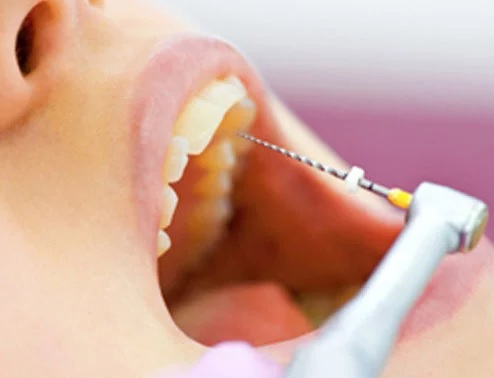Modern dentistry is continuously evolving, and the integration of laser technology in root canal treatment represents one of the most significant advancements in the field. Root canal therapy, traditionally performed with manual instruments, is now enhanced by lasers, offering precision and improved outcomes.
But what makes lasers so effective, and how do they improve this procedure? This blog explores the use of lasers in root canal treatment, their benefits, and what patients can expect during this innovative procedure.
What is Laser-Assisted Root Canal Treatment?
Laser-assisted root canal treatment uses highly concentrated light beams (lasers) to clean and disinfect the tooth’s root canals. A root canal procedure involves removing the infected pulp, disinfecting the canals, and sealing the tooth to prevent future infections. The use of lasers adds an extra layer of precision and effectiveness, making the process faster and more efficient compared to traditional methods.
The two primary types of lasers used in dentistry are:
- Erbium Lasers: Effective for removing tissue and cutting through dentin.
- Diode Lasers: Known for their antimicrobial properties, used to sterilize root canals.
How Lasers are Used in Root Canal Treatment
- Access and Cleaning:
Lasers are used to clean the root canal system by targeting and removing debris and infected tissue. Unlike traditional tools, lasers can reach areas that are otherwise difficult to access, ensuring a thorough cleaning. - Disinfection:
One of the most crucial steps in root canal therapy is eliminating bacteria to prevent reinfection. Lasers effectively sterilize the root canal by targeting and destroying bacteria, biofilms, and other pathogens. - Sealing the Canals:
After cleaning and disinfection, lasers can assist in drying the canals and preparing them for sealing. This ensures a tight and secure seal, reducing the chances of reinfection.
Benefits of Using Lasers in Root Canal Treatment
- Enhanced Precision:
Lasers allow dentists to target infected areas with high accuracy, leaving healthy tissue untouched. This minimizes damage to the tooth structure and speeds up healing. - Better Sterilization:
The intense light and heat generated by lasers eliminate bacteria more effectively than traditional cleaning methods, reducing the risk of post-procedure infections. - Reduced Discomfort:
Laser treatments are less invasive and often cause minimal discomfort compared to conventional tools. Many patients report less pain during and after the procedure. - Faster Recovery Time:
By causing minimal damage to surrounding tissues and promoting natural healing, lasers can significantly shorten recovery times. - Improved Outcomes:
The precision and thoroughness of laser-assisted root canal therapy often result in better long-term success rates, preserving the natural tooth for years to come. - Minimized Use of Chemicals:
Lasers reduce the reliance on chemical disinfectants, making the procedure safer for patients with sensitivities.
Who Can Benefit from Laser-Assisted Root Canal Treatment?
Laser-assisted root canals are suitable for most patients requiring this procedure. However, they are particularly beneficial for:
- Individuals with severe infections that need thorough disinfection.
- Patients seeking a more comfortable and efficient treatment.
- Those with sensitive teeth or a low tolerance for traditional dental tools.
What to Expect During Laser-Assisted Root Canal Treatment
- Initial Evaluation:
The dentist will conduct X-rays and a thorough examination to assess the condition of the tooth and determine if laser treatment is suitable. - Procedure:
- A small laser device is used to access, clean, and disinfect the root canals.
- The process is minimally invasive, and the laser’s heat may feel slightly warm but not painful.
- Post-Procedure Care:
- Maintain oral hygiene by brushing and flossing daily.
- Avoid chewing hard foods on the treated side for a few days.
- Attend follow-up visits to ensure the tooth heals properly.
Limitations of Laser Use in Root Canal Therapy
While lasers offer numerous advantages, they are not without limitations:
- Cost: Laser treatments are often more expensive than traditional methods.
- Training and Expertise: Not all dentists are trained in laser technology, which may limit its availability.
- Specific Cases: Lasers may not be effective for all types of root canal cases, particularly those involving complex tooth anatomy.
Read more: Root Canal Treatment In Tirupati
Conclusion
The use of lasers in root canal treatment is a game-changer in modern dentistry, combining precision, efficiency, and comfort. This advanced approach ensures better sterilization, reduced discomfort, and quicker recovery times, making it a preferred option for many patients.
If you’re facing a root canal treatment and are interested in laser-assisted options, consult your dentist to learn more about its suitability for your case. Embracing this cutting-edge technology can lead to a healthier, pain-free smile with lasting results.
